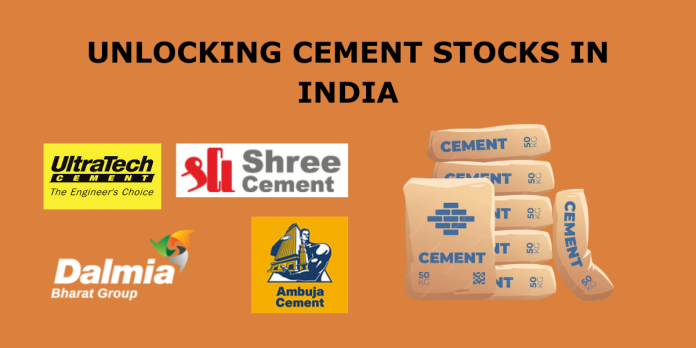The cement sector in India is not just about manufacturing a building material; it’s about laying the foundation for a brighter and more prosperous future. With its crucial role in infrastructure development, housing, and economic growth, the cement industry continues to be a key player in India’s journey towards progress and development. As the nation marches forward with its ambitious plans, the cement sector stands tall as a symbol of strength and resilience. The cement sector is primarily divided into Grey Cement and White Cement.
Read: Best Infrastructure Companies in India
When evaluating cement companies’ valuations, a key factor to consider is EBITDA per ton.
EBITDA per tonne has a significant impact on the valuation of cement companies. It is a key metric that investors and analysts use to assess the profitability and efficiency of a cement company. A high EBITDA per tonne indicates that a company is profitable and efficient, and is, therefore, more likely to be valued at a premium. Conversely, a low EBITDA per tonne indicates that a company is struggling and may not be able to generate enough cash to cover its costs, and is more likely to be valued at a discount.
There are a number of factors that can affect EBITDA per tonne, including the price of cement, the cost of production, the efficiency of the company’s operations, the company’s product mix, and the company’s competitive landscape. Investors and analysts will carefully consider all of these factors when assessing the EBITDA per tonne of a cement company and making valuation decisions.
In general, a higher EBITDA per tonne will lead to a higher valuation for a cement company. This is because investors are willing to pay more for a company that is profitable and efficient. Additionally, a higher EBITDA per tonne indicates that a company is better able to generate cash flow, which can be used to invest in growth opportunities, repay debt, or return to shareholders.
Calculating EBITDA per Ton:
To calculate EBITDA per ton, we need two key figures:
EBITDA: This is the company’s earnings before interest, taxes, depreciation, and amortisation. It represents the operational profit generated by the business.
Total Tons of Cement Produced/Sold: This figure represents the total volume of cement produced or sold by the company during a specific period.
Simply divide the EBITDA by the total tons of cement to obtain the EBITDA per ton.
EBITDA per Ton = EBITDA / Total Tons of Cement
Let’s compare top companies to get a clearer picture:
|
Company name |
Market cap | EBITDA /tn (Q1FY24) | EBITDA /tn (Q1FY23) | EV/EBITDA |
| UltraTech Cement Ltd | 235279.3 | 1,018 | 1,248 | 21.99 |
| Shree Cement Ltd | 93,155 | 1046 | 1092 | 26.03 |
| Ambuja Cements Ltd | 85899.02 | 1,253 | 888 | 16.53 |
| Dalmia Bharat Ltd | 41,940 | 872 | 900 |
15.02 |
UltraTech Cement
UltraTech Cement’s EBITDA/tn is Rs 1,019 which indicates that it is more profitable per unit of production. This is likely due to a number of factors, including UltraTech Cement’s efficient operations, its strong brand recognition, and its ability to control its costs.
Ambuja Cements
Ambuja Cements’ EBITDA/tn is Rs1,253. This is the highest among the companies in the table, indicating that Ambuja Cements is also very profitable per unit of production.
Shree Cement
Shree Cement’s EBITDA/tn is Rs 1,046. This is lower than UltraTech Cement and Ambuja Cements, but still higher than Dalmia Bharat. This indicates that Shree Cement is also profitable per unit of production, but not as profitable as UltraTech Cement and Ambuja Cements.
Dalmia Bharat
Dalmia Bharat’s EBITDA/tn is Rs 872. This is the lowest among the companies in the table, indicating that Dalmia Bharat is the least profitable per unit of production.
Overall
The comparison of EBITDA/tn shows that UltraTech Cement and Ambuja Cements are the most profitable cement companies in India per unit of production. Shree Cement and Dalmia Bharat are also profitable, but not as profitable as UltraTech Cement and Ambuja Cements.
It is important to note that EBITDA/tn is just one metric that can be used to assess the profitability of cement companies. Other important metrics include revenue growth, market share, and competitive positioning. Investors and analysts will consider all of these factors when assessing the profitability of cement companies and making investment decisions.
Disclaimer:This blog has been written exclusively for educational purposes. The securities mentioned are only examples and not recommendations. It is based on several secondary sources on the internet, and is subject to changes. Please consult an expert before making related decisions.


